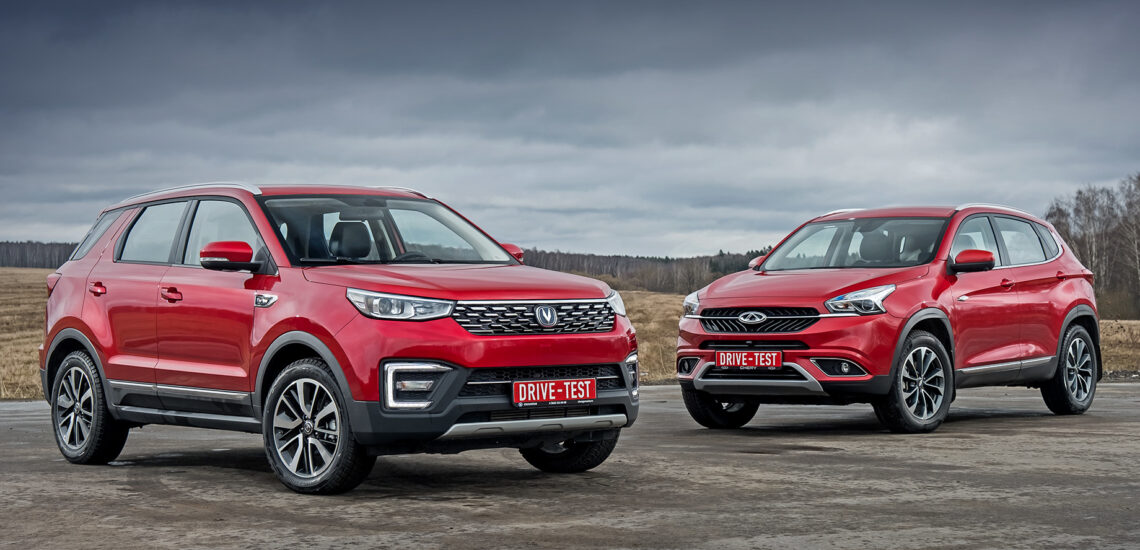İlk izlenim: çift görmek. Changan CS55 ve Chery Tiggo 7 crossover’ları boyut olarak benzerdir, aynı kutudan çıkmış gibi boyanmış ve alt çevrenin plastik kaplamasına kadar tek bir kanona göre dekore edilmiştir. Ancak Chery daha ucuzdur. Testte iki pedallı üst versiyonlar kullanılmıştır. İstatistiklere göre, Çin teknolojisi alıcıları cimri değildir, basitleştirilmiş olanlardan çok daha sık zengin donanımlar seçmektedir.
Menşei ülke sizi karıştırıyorsa, amblemi avucunuzla kapatmanız yeterlidir. Izgarada bir “kuş” olmadan, CS55 bazı SsangYong veya hatta Kia ile karıştırılabilir. C sütununun eğimi, Changan’ı safkan bir Discovery Sport gibi gösterir. Ve intihalden dolayı suçlayamazsınız: belirgin olmayan ödünç almalar, ağırlıklı ortalama modern bir SUV’nin görüntüsüne başarıyla işlenmiştir. Orijinal değil, ancak sahte de değil.
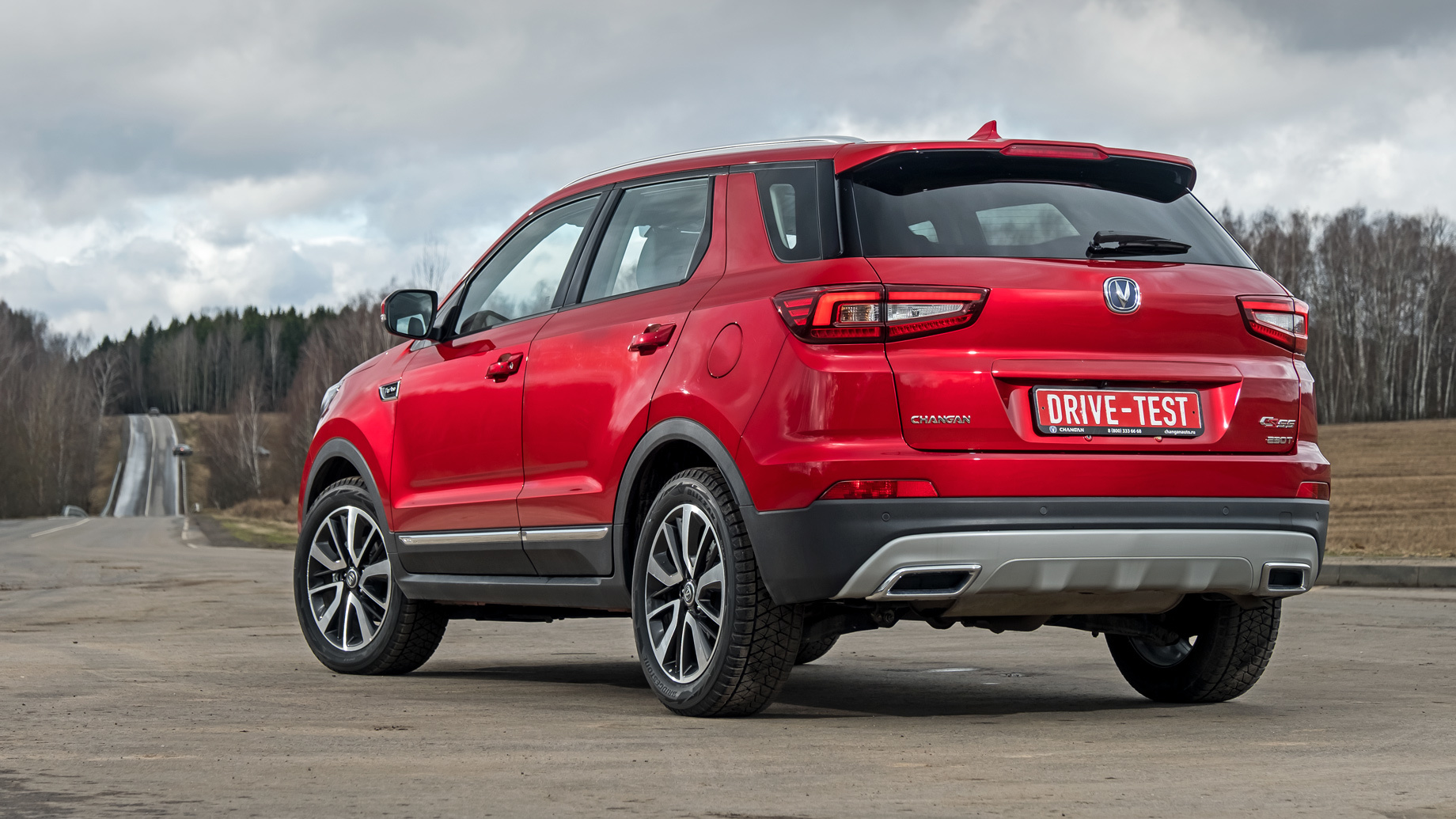
Yine de işçilik kalitesi dünya seviyesine çıkarılmalı. Kapılar arasındaki boşluklardaki farka ve bagaj kapağının hafif çarpıklığına göz yumabilirim. Ancak, sedef sırının eşit olmayan kalınlığı nedeniyle Changan’ın gövdesinde kel noktalar parlıyor. Ve gövdenin iç kenarlarındaki boya eksikliği doğrudan tutumluluğu gösteriyor. Bu tür “metalikler” için ek bir ödeme yapılmaması pek teselli edici değil.
Tiggo 7 daha iyi monte edilmiş, örneğin Kore arabalarından daha kötü değil. Görünüşte, Chery’den emekli olmuş James Hope tarafından yaratılmış, “yedi” orijinal olarak adlandırılamasa da, açık alıntılar yoktu. Şaşkınlığa neden olan esas olarak güç ünitelerinin seçimidir. Mekanik şanzımanlı temel crossover, 152 hp kapasiteli modern bir yarım litrelik turbo motorla donatılmışken, CVT’li pahalı versiyonların kaputunun altında 122 kuvvet geliştiren eski bir iki litrelik aspirasyonlu motor bırakılmıştır. Tiggo 7 model yelpazesinde yukarı doğru hareket ederken, alıcı kumaş döşemeli rahat koltukları da kaybeder. Ve delikli deri kumaşla süslenmiş Elite ve Elite Plus versiyonlarının koltukları çok yumuşak ve şekilsizdir. Sürücünün iniş sorunu, erişim için ayar yapılmayan direksiyon kolonu tarafından karmaşık hale getirilir. Ve ileri görüş, geniş sütunlar tarafından engellenir. Aynı zamanda, büyük yan aynalar arkada olan biteni iyi bir şekilde kontrol etmenizi sağlar.
Tiggo, ön tekerleklerin etrafında kör nokta izleme özelliğine sahip bir çevre görüş sistemine sahiptir. Ayna muhafazalarındaki kameralar, dönüş sinyali açıldığında etkinleştirilir. Vasat görüntü kalitesine rağmen, dar park yerlerinde manevra yaparken iyi bir yardımcıdır. Ayrıca, geceleri, direksiyon simidi saptırıldığında, ek viraj aydınlatması etkinleştirilir. Ve her iki sis farı aynı anda yanıp sönerek kaputun önündeki tüm sektörü kaplar.
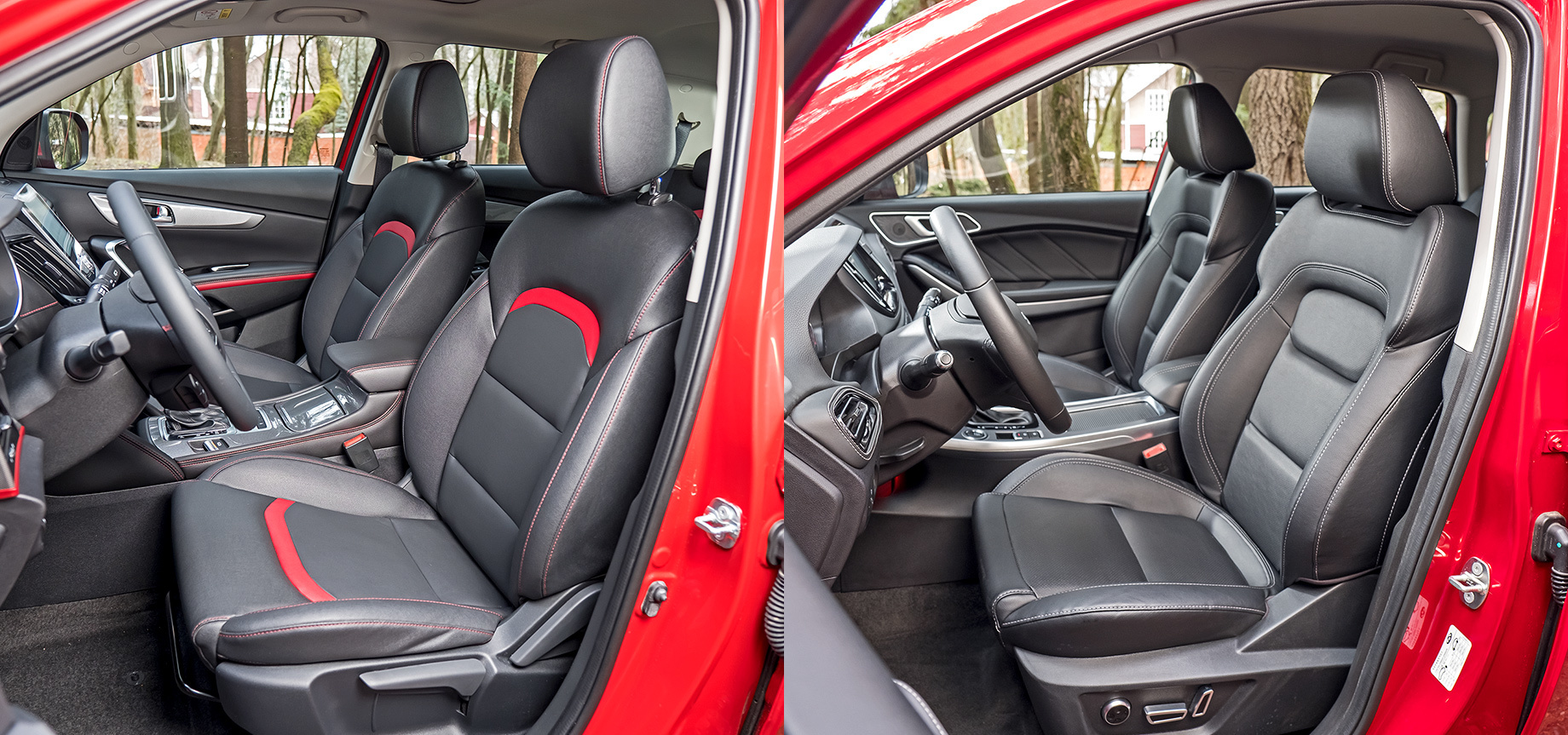
CS55’te sağ tarafı izleyen ve şanzıman seçicinin yanındaki bir düğmeyle zorla etkinleştirilen tek taraflı bir kamera var. Ancak A sütunları daha ince ve yan aynaların kapsamı daha da geniş. Ancak ön koltukların görünümü can sıkıcı: döşeme, yer yer düzensiz dikişlerle birbirine bağlanmış, farklı tonlardaki deri kumaş parçalarından yapılmış gibi görünüyor. Ancak buradaki dolgu daha yoğun, yastık daha uzun ve sırt profili daha uygun – oturması rahat. Kısmen direksiyon simidini kendinize doğru itme yeteneğinden dolayı.
Changan’ın ergonomisi genel olarak övgüye değer. Medya sisteminin eğimli ekranı, beklentilerin aksine, güneşte parlamaz. Çift bölgeli klima kontrolü mantıksal olarak düzenlenmiştir. Ne yazık ki, gece park ettikten sonra iç mekan uzun süre ısınıyor ve yolculuklarda sürekli olarak soğuk hava yükleriyle aşırı soğutuluyor. Ayrıntılara bakınca, CS55’in iç mekanının prömiyerden sadece bir buçuk yıl sonra evde neden güncellendiğini anlıyorum. Sadece ön panelde, oldukça güzelden açıkçası ucuza kadar yedi çeşit plastik saydım.
Chery’nin yarı otomatik kliması daha stabil çalışıyor ve kaplama malzemeleri daha yüksek ve daha stabil kalitede. Garip analog ölçekler arasına büyük bir bilgilendirici ekran başarıyla yerleştirilmiş. Chery, tüm elektrikli camlar için otomatik moddan kaçınmıyor. Geceleri, ön ve yan paneller arka aydınlatma ile canlandırılıyor. Torpido gözü için yeterli olmaması üzücü. Ve ana USB konektörünü konsolun altındaki ulaşılması zor bir nişe yerleştirenler yazıklar olsun. Telefonu bağlama görevi imkansız.
Bir milimetreye kadar eşleşen bir dingil mesafesi ile CS55’in arka koltukları daha dar. Dizlerin önünde biraz daha az alan var. Tavan penceresi nedeniyle, üstteki boşluk çok küçük. Ayrıca sert yastık dolgusu yumuşak Tiggo koltukları kadar konforlu bir uyum sağlamaz. “Elli beşinci” koltukta kanepenin ısıtılması sağlanmaz ve “yedinci” koltukta Elite versiyonundan başlayarak iki aşamalıdır. Ancak Chery’nin ikinci sıra yolcuları bir USB konektöründen mahrum bırakılır, ancak Changan’da havalandırma deliklerinin yanında bulunur.
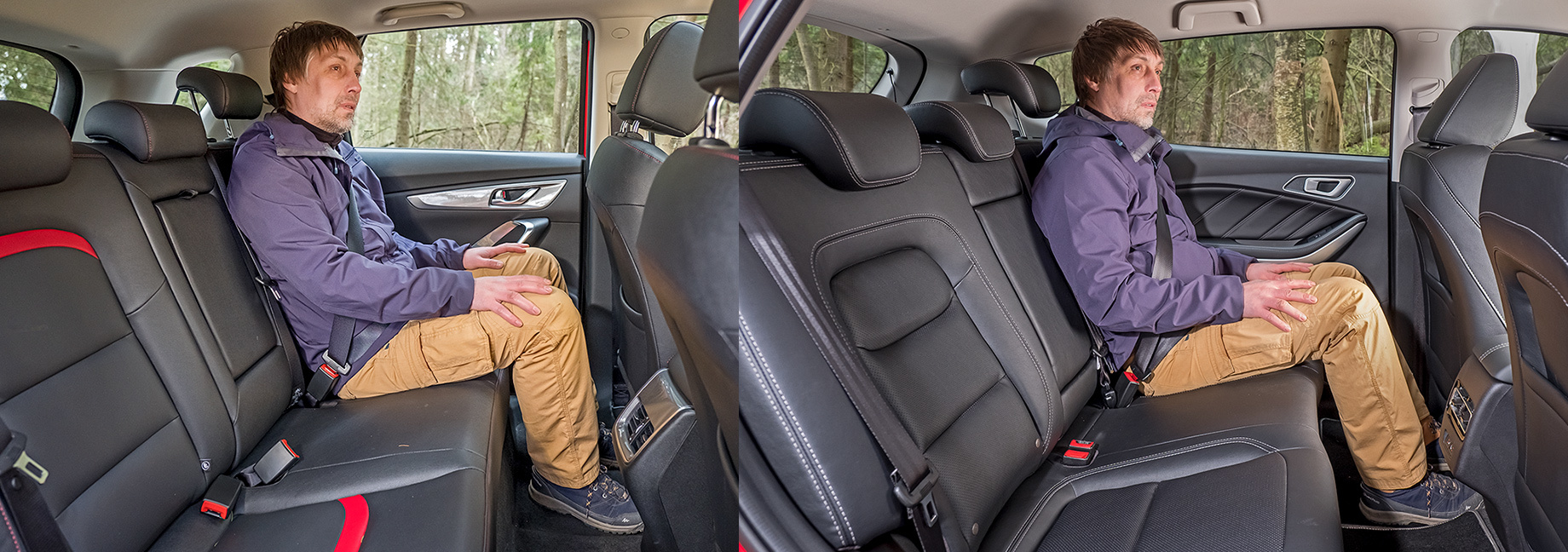
CS55 turbo motoru, Tiggo’nun emişli motorundan 21 beygir gücü ve 30 N•m daha üstündür. Bu hem kısmi şarjda hem de tam gazda hissedilir. Ve itişin eklenmesine karşı hassas tepkiler avantaj hissini artırır. Otomatik şanzıman motoru tahrik tekerlekleriyle iyi bir şekilde birleştirir, vites değişimleri hızlıdır ve neredeyse fark edilmez. Ancak hareket halindeyken bir kickdown talep ettiğinizde, kutu transferle belirlenirken yine de birkaç saniyelik bir aksamayla karşılaşacaksınız.
Chery’yi güçlü bir rakibin peşinde teşvik etme girişimleri, varyatör çalışmasında sapmalara dönüşür. Eco modunda, tam gazda, motor monoton bir uğultu yapar. Spor modu yakıt dağıtımı ile hızlanma arasındaki gecikmeyi azaltır ve takip için daha uygundur. Ancak yoğun trafikte sürüş için serttir ve trafik sıkışıklığında itmek için daha da serttir. Tiggo şanzımanı ikisinin arasında bir şey sunmaz.
Uyum arayışında sakin olmalısınız. Yavaş yavaş sabit bir tempoya geçin, standart CVT programına geri dönün – ve sorunlar ortadan kalkar. Tiggo’yu yoğun hızlanma ile işkenceye sokmazsanız, şanzımanı eleştirecek hiçbir şey yok gibi görünüyor. Gaz pedalının yumuşak hareketine verilen tepkiler optimumdur, hız konforlu değerleri aşmaz. Ve dinamikler oldukça yavaş olarak adlandırılamaz. Ancak düşük devirlerde sürüş yaparken, crossover’ı bir frenle tutmanız gerektiğinde, tork konvertörü kavraması çalışıyormuş gibi kutu seğirir.
Tiggo 7 şasisi, aynı adı taşıyan spor otomobillerin üreticisiyle doğrudan ilişkili olmayan Lotus’un mühendislik departmanının katılımıyla inşa edildi. Bu nedenle, Chery’de bir okul hissediliyorsa, bu yalnızca orta ve kademeli olarak artan yuvarlanmalarda ve dönüşün dikliğini değiştirirken direksiyon simidindeki dönüş kuvvetinde kademeli bir değişikliktedir. Ancak direksiyon ayarını kim yaptıysa, bu işi yarıda bıraktı. Küçük açılarda elektrik amplifikatörü kendi hayatını yaşar: direksiyon bazen çok ağırlaşır, sıfırdan çıkışa direnç gösterir, sonra aniden boşalır.
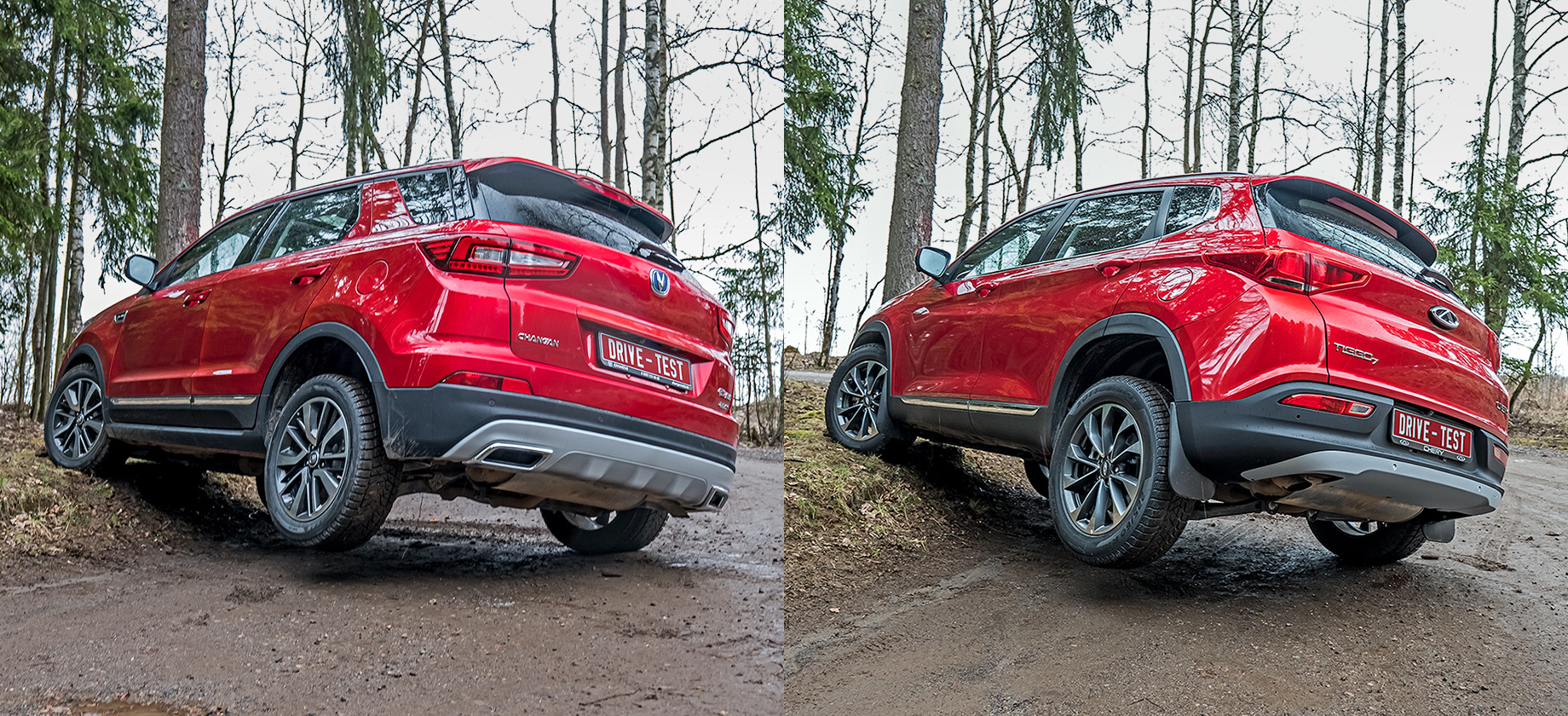
Chery’nin yol tutuşunu iyi olarak adlandırırdım. Ancak dezavantajı engebeli bir yolda zorlu bir hareket olmasıdır. Tiggo süspansiyonu büyük çukurlara, tramvay raylarına ve diğer enine düzensizliklere tahammül etmez. Temel Sport dahil tüm versiyonlarla birlikte gelen ağır 18 inç jantlar sarsıntı yaratır.
Changan’a geçiyorum ve yıpranmış yol boyunca geçen bir buz pateni pisti gibi. Süspansiyon çeşitli boyutlardaki çukurlarla başa çıkmada o kadar başarılı ki bir noktada kaldırımın kalitesine dikkat etmeyi bırakıyorsunuz. Sadece özellikle büyük çukurların etrafından dolaşmak zorundasınız ve bu tür manevralara önceden hazırlanmak daha iyidir. Hız slalomunda CS55 güçlü değil. Direksiyon simidi bilgilendirici olsa da – en derin yuvarlanmalar, uygunsuz erken kayma ve panik ayarlı stabilizasyon sistemi, yakma arzusunu tamamen caydırıyor.
Resmi bilgilerin kıtlığı, geçen yılki CS55 güncellemesi sırasında şasi yükseltmelerine güvenmemize izin vermiyor. Çinliler sadece dış, iç ve bizim için güncelliğini yitirmiş, 373 mil güç rezervine sahip E-Rock’ın elektrikli versiyonunda değişiklikler bildiriyor. Yeniden tasarlanan “elli beşte bir”in kıştan önce piyasaya çıkmayacağı ve yıl sonundan önce test aracı gibi crossover’ların satılacağı biliniyor. İyi bir sürüş, kabul edilebilir gürültü izolasyonu ve ifadesiz yol tutuşu ile.
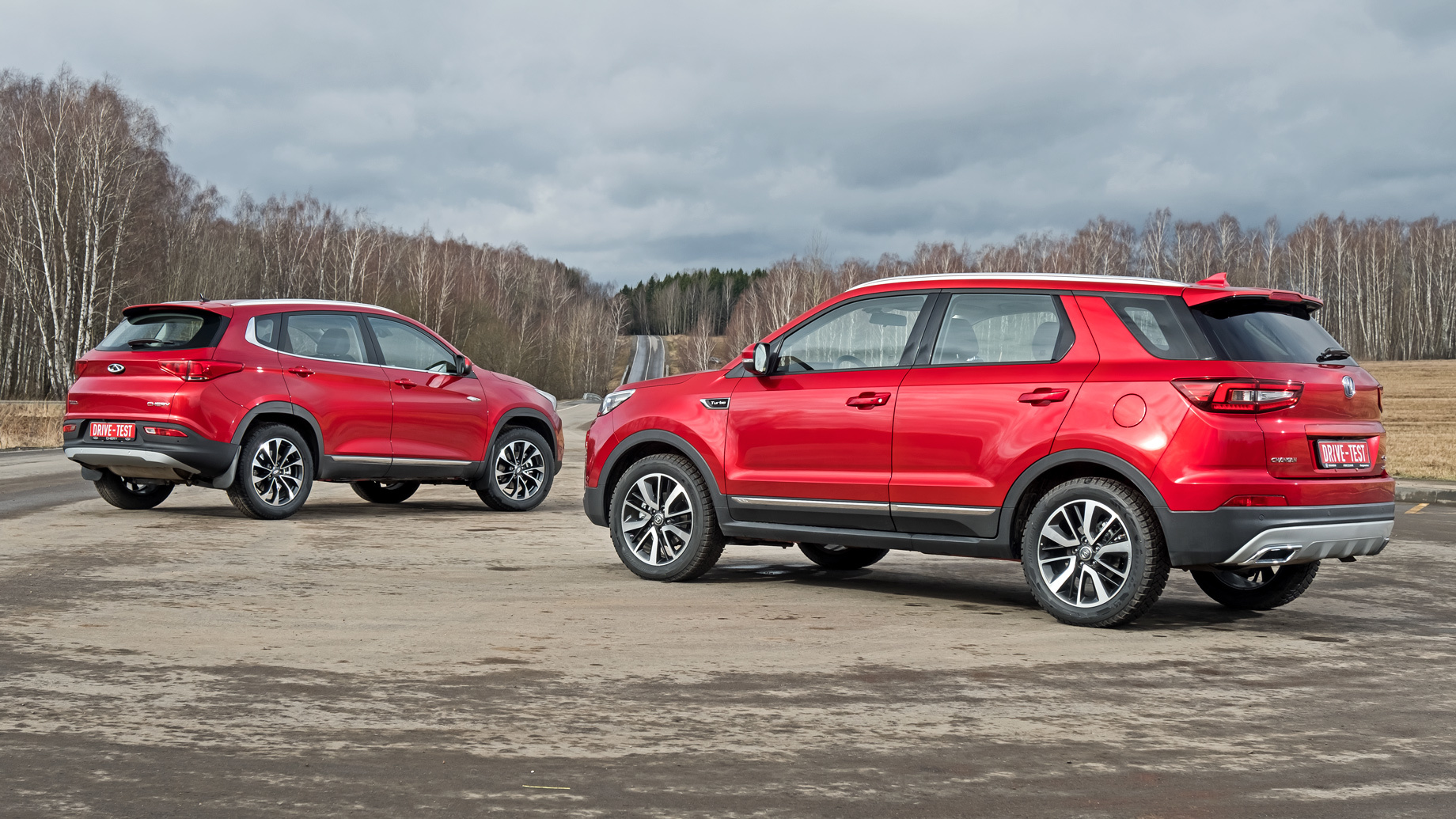
Montaj ve renklendirme kusurlarının daha erken ortadan kaldırılacağı umuluyor. CS55’in üst versiyonunu ısıtmalı direksiyon simidi, ön cam ve arka koltuklarla donatmak güzel olurdu. Bu önemli küçük şeyler olmadan, Changan için etkileyici meblağlar vermek haksız bir cömertlik gibi görünüyor. Sadece Tiggo 7’nin Elite versiyonunda bulunan yukarıda listelenen kış ekipmanlarına sahip olması nedeniyle. Donanım açısından Changan ile karşılaştırılabilir bir Lüks versiyon seçerek, şimdiden paradan tasarruf edebilirsiniz. 4.000 dolara sürüş konforundan ve dinamiklerinden vazgeçmeye hazır mısınız?
Bu bir çeviridir. Orijinalini buradan okuyabilirsiniz: https://www.drive.ru/test-drive/changan/chery/5e7b50fcec05c4fa45000014.html

Yayımlanmış Ocak 12, 2023 • Okuma süresi: 7 dakika

